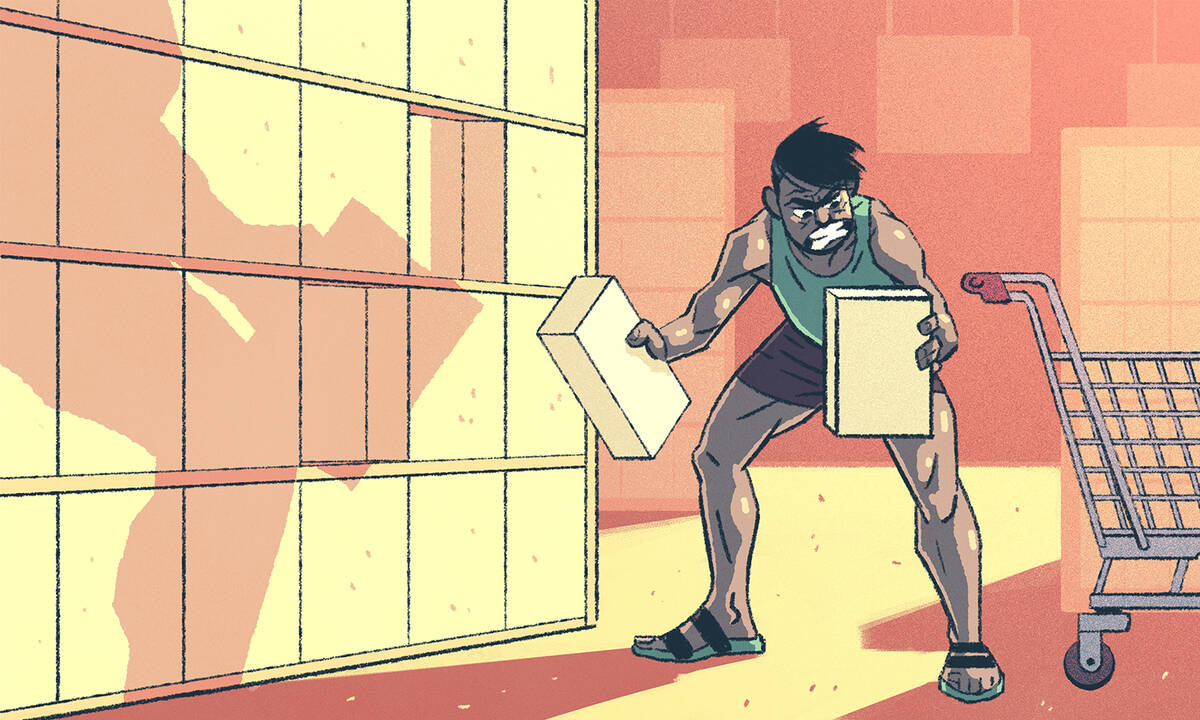Here’s a roundup of some of our favorite findings on how emotions like anger, fear, disgust, and anticipation can shape what ends up in our shopping carts and on our calendars.
Prevailing wisdom suggests that, before making an important purchase, it’s best to feel calm, cool, and collected. After all, you wouldn’t want your emotions to get in the way of a smart decision. But what if that’s not always true?
A set of studies by Michal Maimaran, a research professor of marketing at Kellogg, identifies a surprising benefit to feeling angry when making decisions. Specifically, she and her colleagues find that angry consumers make more goal-oriented choices, are less likely to delay their purchase, are less likely to compromise, and are ultimately more satisfied with their choices than those who are feeling sad, fearful, or even neutral.
No, this doesn’t mean we should always act on our every angry whim. But it does suggest that our anger has the potential to help us focus on what is most important to us.
“We usually think of anger as negative, in the sense that it has a bad effect on us and therefore would inhibit goal pursuit,” says Maimaran. “But anger can actually be beneficial for us. It’s surprisingly counterintuitive.”
If anger can bring clarity to our purchasing decisions, fear and disgust can steer us toward the familiar.
Across several studies, Gregory Carpenter, a marketing professor at Kellogg, and his coauthors found that thinking about contagious diseases—as opposed to unrelated things, or even noncontagious diseases—leads people to prefer familiar brands and products over novel ones. In fact, the amount of influenza in each state can even predict purchases of certain familiar comfort foods—like Campbell’s canned soups and Oreo cookies—over time. A 10 percent increase in flu was linked to a 1.6 percent increase in sales for Campbell’s, but only a 0.1 percent increase for other, less familiar brands.
What’s going on? The researchers believe that infectious diseases conjure feelings of fear and disgust, which in turn influence our shopping preferences. The fear pushes us to take action in order to reestablish some semblance of control, while the disgust makes us want to withdraw, and pulls us away from more novel brands and products.
“We don’t think of buying a traditional Oreo as a way to bring control into our life, but that’s apparently how people are behaving,” says Carpenter.
When we’re feeling glum, it seems as though we should find the prospect of a fun experience—a concert, a vacation, a night out with friends—all the more appealing and therefore be motivated to make it happen.
But that’s not generally the case, according to research from Aparna Labroo, a professor of marketing at Kellogg. She and her colleagues have found that when people are in a bad mood, they find it harder to imagine themselves engaging in enjoyable activities, which can lead to avoiding them altogether.
“When we are in a bad mood, it is difficult to simulate the experience of doing something enjoyable—and we attribute the difficulty of simulating to the enjoyable activity itself,” she explains. “It doesn’t feel right anymore, and then we become more likely to avoid that activity.”
But importantly, there’s a catch: thinking about how happy and positive we’ll feel after a fun activity can help us get out of our rut. Even better, says Labroo, stop thinking and “just do it.”
Most of us have experienced the logic-defying sense that going somewhere seems to take a lot longer than taking the same trip in reverse. The feeling is so common that psychologists have a term for it: the “return-trip effect.”
This perception can be at least partly explained by anticipation. Research from Kellogg marketing professor Derek Rucker and his collaborators has found that the return-trip effect is stronger when people have a powerful sense of anticipation about their destination—whether that anticipation is positive (as when we’re headed to Disneyland) or negative (as when we’re going to the dentist).
Firms and researchers should take note: after all, time plays an important role in many aspects of the customer experience, from standing in a long checkout queue, to watching an app load, to waiting for a package to be delivered. “It’s a call for researchers to pay greater attention to how consumers understand or perceive the passage of time in their environment,” says Rucker.
Perhaps you’ve scoured movie, restaurant, or product reviews, only to experience the “positivity problem”—a lot of movies, restaurants, and products have positive reviews, and you cannot discriminate between them. Rucker and his colleague Loran Nordgren, a professor of management and organizations at Kellogg, offer an intriguing workaround.
Through computational analysis of hundreds of thousands of online reviews, the researchers discovered that positive star and numerical ratings don’t always reliably correlate with how well products and businesses ultimately fared because they are overall so positive. But something else did: the emotionality of the reviews.
Emotionality is the extent to which a reaction is rooted in emotion. “‘Awesome’ is a very positive word that also conveys a lot emotion with it,” Rucker explains. “‘Perfect’ is also a very positive word, but it doesn’t have a lot of emotionality.”
Movies, books, and restaurants with reviews that scored high in emotionality were ultimately more successful in terms of sales (or in the case of restaurants, daily reservations) than those with less-emotional reviews. This is useful information for consumers, of course—but also for firms that want to know whether their product is actually connecting with people.
“The promise of these online platforms is that now we can see and learn from others, and that should have extraordinary value,” Nordgren says. But the overwhelming number of positive reviews has dampened their usefulness, resulting in a missed opportunity. Looking at emotionality is one important way to capitalize “on that unrealized promise.”




